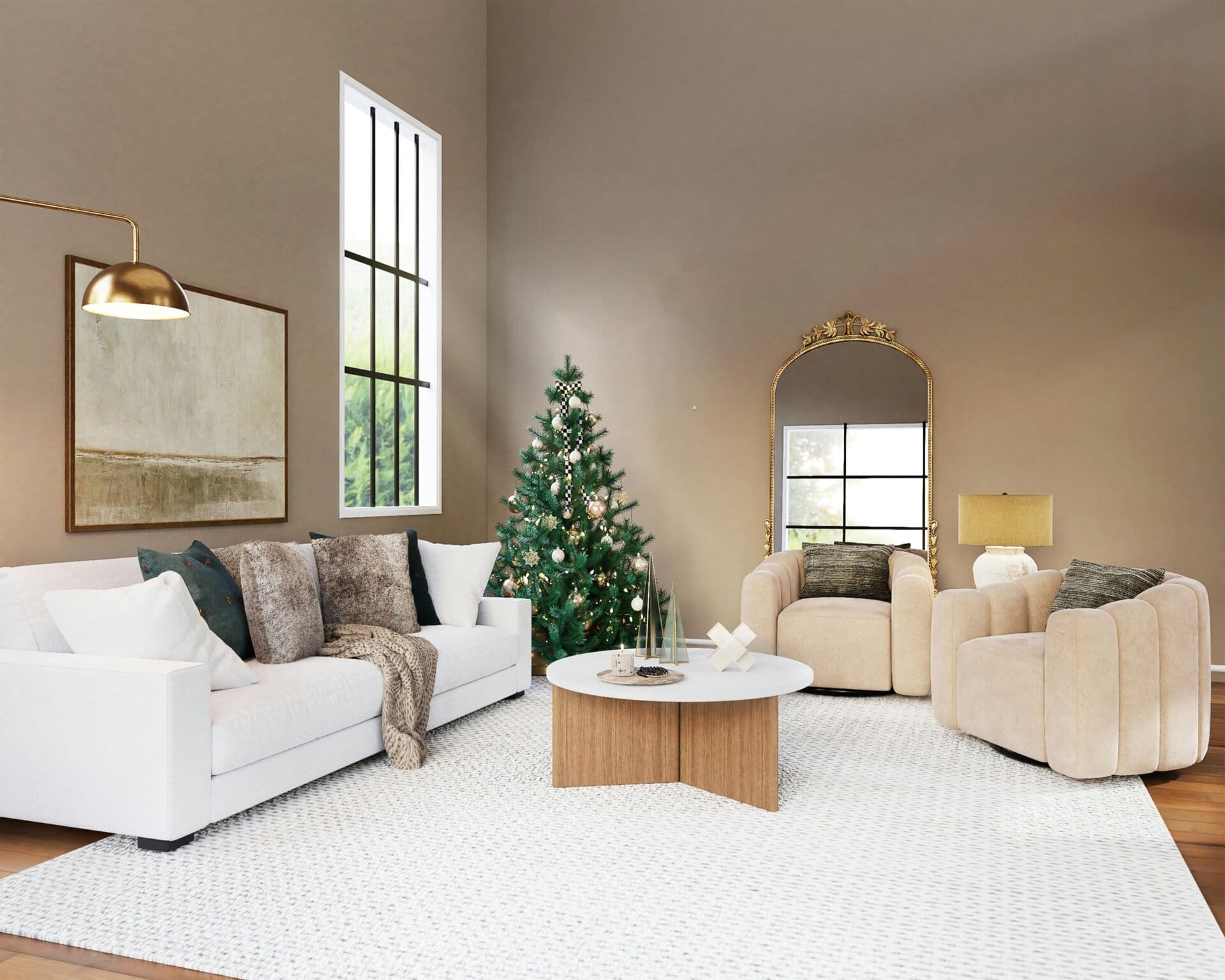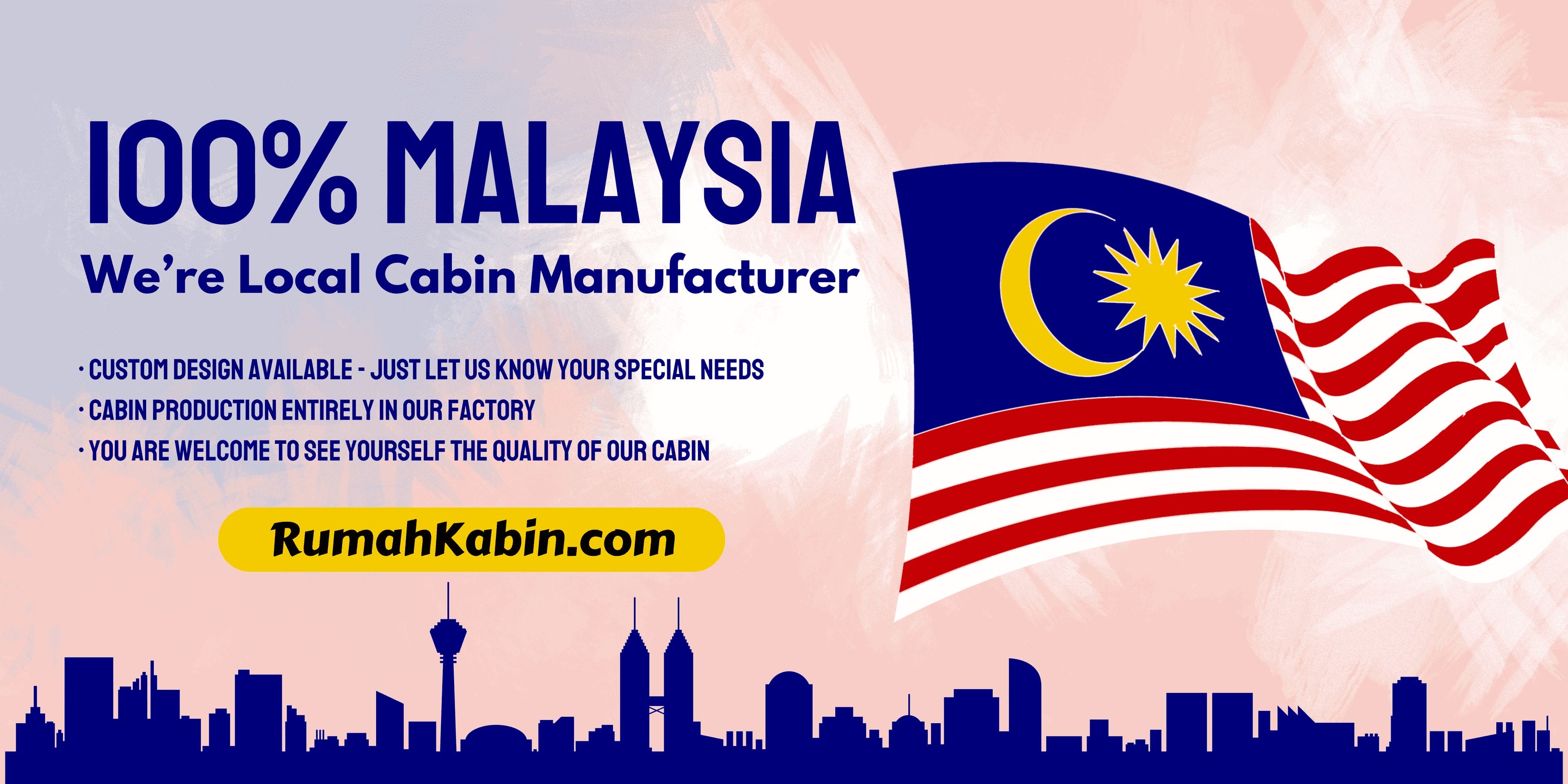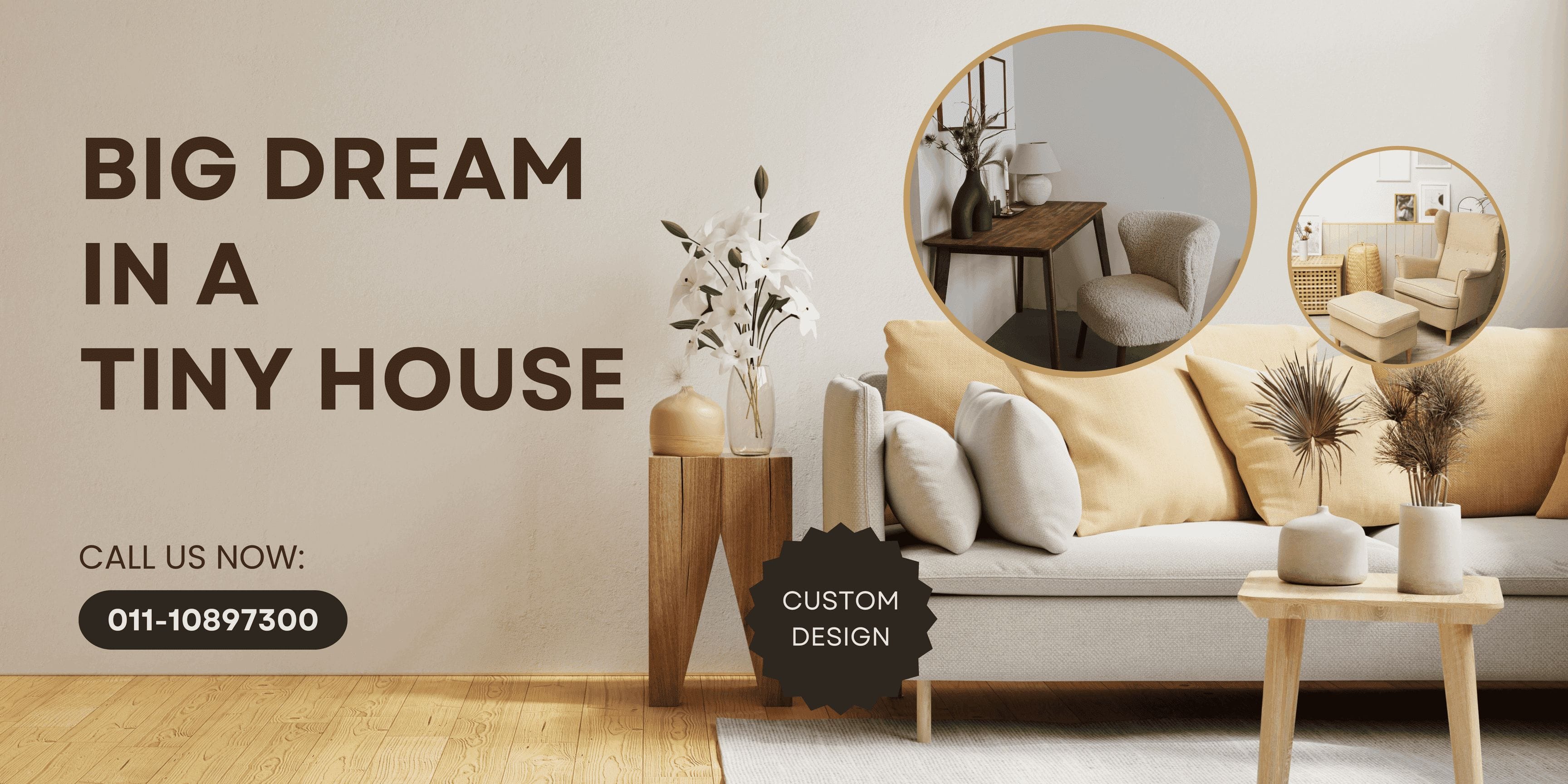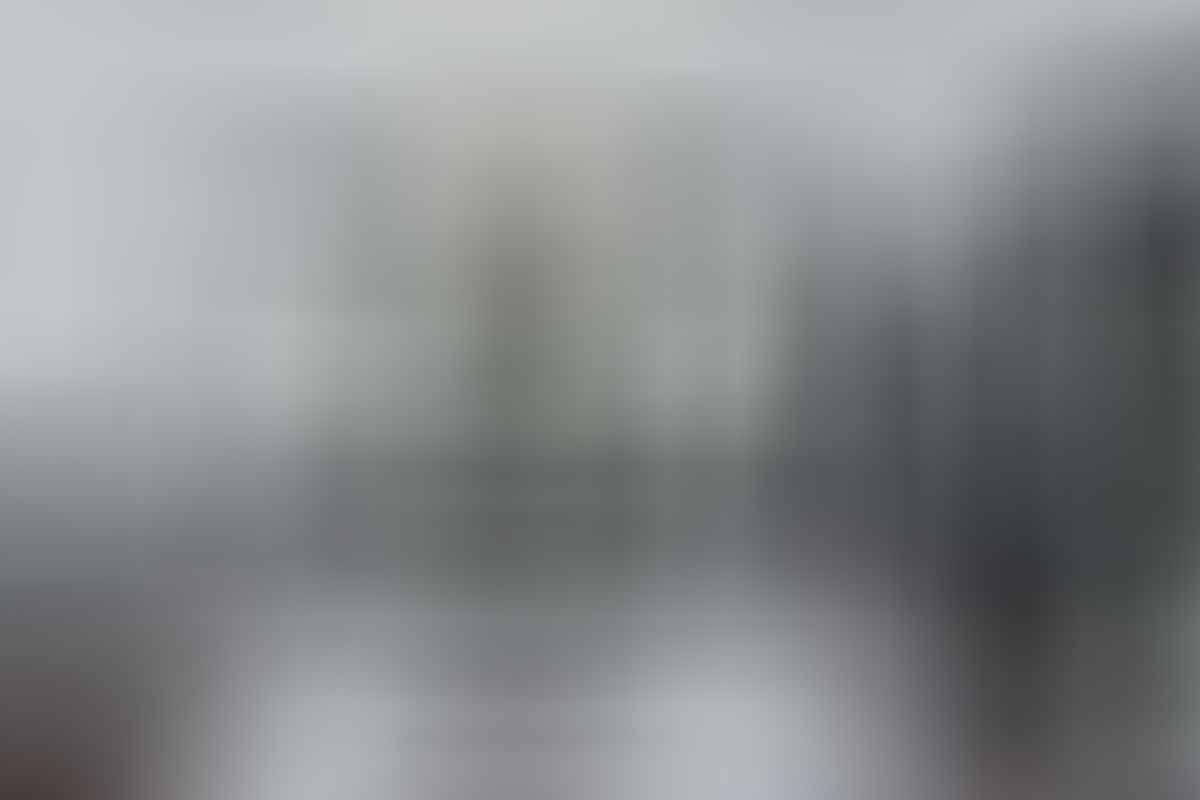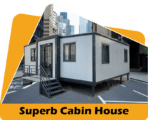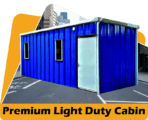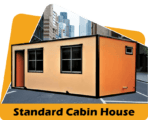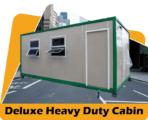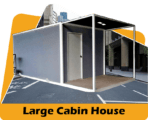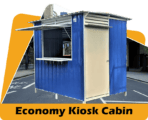Elevating Your Space: A Guide to Light Duty Cabins in Malaysia
1. Introduction to Light Duty Cabins
Definition and Purpose
In Malaysia, light duty cabins serve as versatile and portable structures that find utility across various sectors. These cabins, also known as portable cabins or modular buildings, are ingeniously designed to offer temporary or semi-permanent solutions for a myriad of needs. Light duty cabins are commonly used in construction sites, events, commercial spaces, and even for residential purposes.
Importance in Various Sectors
Construction Sector
Light duty cabins play a crucial role in the construction industry, providing on-site offices, storage spaces, and welfare facilities for workers. These cabins offer a convenient solution for managing projects efficiently, ensuring that construction activities proceed smoothly without compromising on comfort and safety. With options ranging from premium to economy specifications, construction companies can choose cabins that align with their budget and requirements.
Commercial Spaces and Events
Events and fairs in Malaysia often require temporary structures to accommodate vendors, organizers, and visitors. Light duty cabins offer the perfect solution with their quick installation, customizable designs, and flexibility. Whether it’s a trade show, exhibition, or festival, these cabins provide functional spaces for ticket booths, information centers, and rest areas.
Residential Purposes
In residential settings, light duty cabins serve as temporary housing solutions during renovation projects or as emergency shelters in disaster situations. These cabins can be customized to include living spaces, kitchens, bathrooms, and even amenities like air conditioning and heating systems. Their versatility makes them invaluable for homeowners facing temporary displacement or in need of extra space.
Educational and Healthcare Settings
Educational institutions and healthcare facilities also benefit from light duty cabins. Schools may use them as temporary classrooms during expansion projects or renovations. Similarly, hospitals and clinics can deploy cabins as makeshift wards, examination rooms, or administrative offices to accommodate surges in patient numbers or to facilitate renovations without disrupting daily operations.
Table: Applications of Light Duty Cabins in Various Sectors
| Sector | Applications |
|---|---|
| Construction | On-site offices, storage, welfare facilities |
| Commercial Events | Ticket booths, information centers, rest areas |
| Residential | Temporary housing during renovations, emergency shelters |
| Education | Temporary classrooms, administrative offices |
| Healthcare | Makeshift wards, examination rooms |
Light duty cabins, with their adaptability, durability, and cost-effectiveness, continue to be a go-to solution for addressing temporary space needs across diverse sectors in Malaysia. Whether it’s enhancing efficiency on construction sites, facilitating seamless events, providing temporary housing, or supporting educational and healthcare facilities, these cabins play a vital role in elevating spaces and meeting dynamic requirements.

spacejoy RqO6kwm4tZY unsplash scaled
2. Understanding Light Duty Cabin Specifications
Light duty cabins come with a variety of specifications to meet different needs and preferences. Whether you opt for a premium or economy option, understanding these specifications is crucial for making an informed decision. Let’s delve into the details of various components:
Overview of Premium and Economy Bases
Light duty cabins typically come with two types of bases: premium and economy. Here’s a breakdown of each:
Premium Base
- Metal Base with Protection Coating (WITHOUT TIMBER): This base offers enhanced durability and resistance to environmental factors. The metal base, coated with a protective layer, ensures longevity and stability, making it suitable for long-term use.
Economy Base
- Medium-Duty Metal Base Coated with Zinc Chromate: While slightly less robust than the premium option, the economy base still provides adequate strength and protection. Coated with zinc chromate, it offers corrosion resistance and durability at a more affordable price point.
Comparison of Premium and Economy Floors
The floor of a light duty cabin is essential for providing a comfortable and sturdy foundation. Here’s how premium and economy floors differ:
Premium Floor
- Plywood Finished with PVC Vinyl: Premium floors feature plywood with a PVC vinyl finish, offering a smooth and aesthetically pleasing surface. This combination ensures durability, ease of maintenance, and resistance to wear and tear.
Economy Floor
- Waterproof Plywood with Anti-Termite Coating: Economy floors prioritize practicality and affordability. Made of waterproof plywood with an anti-termite coating, these floors are suitable for basic needs and provide protection against moisture and pests.
Features of Premium and Economy Walls
Walls are crucial components of light duty cabins, providing structural support and insulation. Here’s what distinguishes premium and economy walls:
Premium Wall
- 100% Steel Frame (WITHOUT TIMBER): Premium walls boast a steel frame construction, offering exceptional strength and durability without the need for timber support. Internally, they feature PVC laminated white plywood for a sleek finish, while externally, they are clad with PPGI metal deck for added protection.
Economy Wall
- Medium/Light Steel Structures Fully Welded c/w PPGI Metal Deck: Economy walls feature welded steel structures, providing sufficient support and stability. They are clad with PPGI metal deck both internally and externally, offering basic protection and structural integrity.
Examination of Premium and Economy Roofs
Roofs play a critical role in protecting occupants from the elements. Here’s what you need to know about premium and economy roofs:
Premium Roof
- 100% Steel Framed Truss & covered with PPGI Metal Deck: Premium roofs feature a steel-framed truss structure, ensuring robustness and longevity. Covered with PPGI metal deck, they offer superior protection against rain, sun, and other weather conditions. The ceiling is finished with PVC laminated white plywood for a polished look.
Economy Roof
- PPGI Metal Deck Roof: Economy roofs feature a simpler design, with PPGI metal deck roofing providing basic protection against the elements. While more budget-friendly, these roofs still offer durability and weather resistance.
Comparison of Premium and Economy Windows
Windows not only allow natural light into the cabin but also contribute to its aesthetic appeal and ventilation. Here’s how premium and economy windows differ:
Premium Window
- Adjustable Louver Black Tinted Glass (2×3 ft = 2 Sets): Premium windows feature adjustable louvers and black-tinted glass, providing both privacy and aesthetic enhancement. With two sets included, they offer versatility in controlling light and airflow.
Economy Window
- Adjustable Louver Black Tinted Glass (2×3 ft = 1 Set): Economy windows offer similar functionality but with a more budget-friendly approach. With one set of adjustable louvers and black-tinted glass, they still provide adequate light control and ventilation.
Table: Comparison of Light Duty Cabin Specifications
| Component | Premium Specification | Economy Specification |
|---|---|---|
| Base | Metal Base with Protection Coating (WITHOUT TIMBER) | Medium-Duty Metal Base Coated with Zinc Chromate |
| Floor | Plywood Finished with PVC Vinyl | Waterproof Plywood with Anti-Termite Coating |
| Wall | 100% Steel Frame (WITHOUT TIMBER) | Medium/Light Steel Structures Fully Welded c/w PPGI Metal Deck |
| Roof | 100% Steel Framed Truss & covered with PPGI Metal Deck | PPGI Metal Deck Roof |
| Window | Adjustable Louver Black Tinted Glass (2×3 ft = 2 Sets) | Adjustable Louver Black Tinted Glass (2×3 ft = 1 Set) |
Understanding these specifications allows you to choose the light duty cabin that best suits your needs, whether you prioritize durability, aesthetics, or budget considerations. Each component contributes to the overall functionality and performance of the cabin, ensuring a comfortable and efficient space for various applications.
3. Material Selection and Durability
Selecting the right materials for light duty cabins is paramount to ensure longevity, functionality, and cost-effectiveness. Let’s explore the various materials used in these cabins and their durability factors.
Importance of Metal Base and Coatings
The metal base serves as the foundation of the cabin, providing stability and structural support. Coated with protective layers such as zinc chromate, these bases offer resistance against corrosion, rust, and environmental factors. This ensures that the cabin remains sturdy and durable even in harsh conditions, prolonging its lifespan and reducing maintenance costs over time.
Advantages of Plywood and PVC Vinyl Floors
Flooring materials like plywood finished with PVC vinyl offer several advantages. Plywood provides a strong and stable surface, while PVC vinyl adds a protective layer that enhances durability and makes cleaning easier. Together, they create a flooring solution that is resistant to wear and tear, moisture, and stains, ensuring a long-lasting and aesthetically pleasing floor.
Considerations for Waterproof Plywood and Anti-Termite Coating
For economy options, waterproof plywood with an anti-termite coating is a practical choice. This combination of materials not only protects against water damage but also prevents termite infestations, which can compromise the structural integrity of the cabin. This ensures that the cabin remains resilient in humid environments and areas prone to termite activity.
Strengths of Steel Frame Walls
Walls constructed with a steel frame offer unparalleled strength and durability. Unlike traditional timber frames, steel frames are resistant to rot, pests, and fire, making them ideal for long-term use. The use of PVC laminated white plywood internally adds a sleek finish, while externally, PPGI metal deck provides additional protection against external elements, ensuring the integrity of the structure.
Benefits of PPGI Metal Decking
PPGI metal decking, used in both walls and roofs, offers numerous benefits. It is lightweight yet durable, providing excellent resistance to corrosion, weathering, and impact. Additionally, its smooth surface allows for easy cleaning and maintenance, while its thermal properties contribute to energy efficiency by helping regulate interior temperatures.
Durability of Steel Truss Roofs
The steel truss construction of roofs ensures superior durability and structural integrity. Steel trusses are capable of withstanding heavy loads and harsh weather conditions, providing long-term protection for occupants and belongings. Covered with PPGI metal deck, these roofs offer reliable waterproofing and weatherproofing, making them suitable for a variety of environments.
Table: Materials and Durability Factors in Light Duty Cabins
| Component | Material | Durability Factors |
|---|---|---|
| Base | Metal with Coatings | Resistance to corrosion, rust, and environmental factors |
| Floor | Plywood with PVC Vinyl | Wear and tear resistance, moisture resistance, easy cleaning |
| Wall | Steel Frame with Plywood and PPGI Metal Deck | Strength, resistance to rot, pests, and fire, protection from external elements |
| Roof | Steel Truss with PPGI Metal Deck | Structural integrity, resistance to heavy loads and weather conditions, waterproofing |
By carefully selecting materials that prioritize durability, light duty cabins in Malaysia can withstand the rigors of their intended use, ensuring a safe, comfortable, and long-lasting space for various applications. Whether it’s in construction sites, events, residential areas, or other settings, these cabins offer reliability and peace of mind to occupants.

spacejoy trG8989WjFA unsplash scaled
4. Design and Aesthetic Considerations
When it comes to light duty cabins, design and aesthetics play a significant role in enhancing the overall appeal and functionality of the space. Let’s delve into various design elements and considerations for both premium and economy options.
Aesthetics of Premium vs. Economy Options
Premium Options
- Sleek and Modern: Premium light duty cabins often boast sleek and modern designs, featuring clean lines and contemporary finishes. These cabins are designed to exude sophistication and elegance, making them suitable for upscale events, corporate settings, and high-end residential applications.
- Customization: Premium cabins offer greater customization options, allowing customers to tailor the design to their specific preferences and branding requirements. From customized colors and finishes to architectural details and branding elements, these cabins can be personalized to create a unique and memorable space.
Economy Options
- Functional and Practical: Economy light duty cabins prioritize functionality and practicality over aesthetics. While they may lack the sleek and modern design elements of premium options, they still offer reliable and functional spaces for various applications.
- Cost-effective Solutions: Economy cabins are designed to provide cost-effective solutions for temporary space needs. While they may not offer extensive customization options, they are budget-friendly alternatives that still meet basic requirements.
Design Flexibility with Adjustable Louver Windows
Adjustable louver windows offer versatility in light duty cabin design, allowing for controlled ventilation, natural light, and privacy. Here’s how they enhance the aesthetic appeal and functionality of the space:
- Ventilation: Louver windows can be adjusted to regulate airflow and ventilation within the cabin, ensuring a comfortable environment for occupants.
- Natural Light: By allowing natural light to enter the space, louver windows create a bright and inviting atmosphere, reducing the need for artificial lighting during the day.
- Privacy: The adjustable nature of louver windows allows occupants to control the amount of privacy they desire, making them suitable for various applications, from offices to residential spaces.
Impact of Black Tinted Glass
Black tinted glass windows add a touch of sophistication and elegance to light duty cabins. Here’s how they enhance the overall aesthetic appeal of the space:
- Sleek Appearance: Black tinted glass windows lend a sleek and contemporary look to the cabin, enhancing its visual appeal and making it stand out in any setting.
- Privacy: The tinted glass provides privacy for occupants while still allowing natural light to filter through, creating a comfortable and inviting environment.
- Energy Efficiency: Tinted glass windows help reduce solar heat gain, improving energy efficiency and keeping the interior cool and comfortable, especially in Malaysia’s tropical climate.
Visual Appeal of Metal Doors
Metal doors are not only durable and secure but also contribute to the aesthetic appeal of light duty cabins. Here’s why they are a popular choice:
- Modern Aesthetic: Metal doors complement the sleek and modern design of light duty cabins, adding a touch of sophistication to the overall appearance.
- Security: Metal doors offer enhanced security and protection against intruders, making them ideal for commercial and industrial applications where security is a priority.
- Durability: Built to withstand the elements, metal doors are highly durable and resistant to wear and tear, ensuring long-term performance and reliability.
Table: Design and Aesthetic Features of Light Duty Cabins
| Feature | Premium Option | Economy Option |
|---|---|---|
| Design | Sleek, modern, customizable | Functional, practical, cost-effective |
| Windows | Adjustable louvers with black tinted glass | Adjustable louvers with black tinted glass |
| Doors | Metal doors with modern design | Metal doors for security and durability |
In conclusion, design and aesthetic considerations play a crucial role in enhancing the appeal and functionality of light duty cabins. Whether opting for premium or economy options, customers can choose designs and features that align with their specific needs, preferences, and budget constraints. From sleek and modern finishes to practical and cost-effective solutions, light duty cabins offer versatile spaces that cater to a wide range of applications in Malaysia.
5. Electrical Components and Installation
In light duty cabins, proper electrical components and installation are essential to ensure functionality, safety, and convenience. Let’s explore the various electrical components and considerations involved in setting up these cabins.
Overview of Light, Socket, and DB Fittings
Lighting
- LED Lights: LED lights are energy-efficient and long-lasting, making them ideal for illuminating light duty cabins. They provide bright and even lighting, enhancing visibility and creating a comfortable environment for occupants.
- Placement: Strategically placed LED lights ensure adequate illumination throughout the cabin, including work areas, living spaces, and corridors.
Sockets
- Power Outlets: Power outlets are essential for connecting electrical appliances and devices within the cabin. They should be conveniently located and properly installed to ensure easy access and safety.
- Quantity: Depending on the size and intended use of the cabin, multiple power outlets may be required to accommodate various appliances and devices.
Distribution Boards (DB)
- Main Distribution Board: The main distribution board (DB) serves as the central point for distributing electrical power throughout the cabin. It houses circuit breakers or fuses to protect against electrical overloads and short circuits.
- Sub Distribution Boards: In larger cabins or cabins with multiple rooms, sub distribution boards may be installed to distribute power to specific areas or circuits, providing greater control and safety.
Importance of External Junction Boxes
External junction boxes play a crucial role in electrical installations, providing protection and organization for wiring connections outside the cabin. Here’s why they are essential:
- Protection: External junction boxes protect wiring connections from environmental factors such as moisture, dust, and debris, ensuring safety and preventing electrical hazards.
- Organization: Junction boxes help organize and secure wiring connections, making it easier to identify and troubleshoot electrical issues when necessary.
- Accessibility: Accessible junction boxes allow for easier maintenance and repairs, minimizing downtime and ensuring continued functionality of electrical systems.
Installation Process and Considerations
Professional Installation
- Qualified Electrician: Electrical installations in light duty cabins should be carried out by qualified electricians with experience in portable structures. They have the knowledge and expertise to ensure compliance with safety standards and regulations.
- Safety Standards: Installations should adhere to relevant safety standards and regulations to prevent electrical hazards and ensure the safety of occupants.
Considerations
- Load Calculation: Before installation, load calculations should be performed to determine the electrical requirements of the cabin, including lighting, appliances, and other electrical loads.
- Wiring Layout: Proper wiring layout and routing are essential to minimize voltage drop, ensure efficient power distribution, and reduce the risk of electrical faults.
Table: Electrical Components and Installation in Light Duty Cabins
| Component | Description |
|---|---|
| Lighting | LED lights for energy-efficient illumination |
| Sockets | Power outlets for connecting appliances |
| Distribution Boards | Main and sub distribution boards for power distribution |
| Junction Boxes | External boxes for protecting and organizing wiring connections |
Proper selection and installation of electrical components are crucial for ensuring the safety, functionality, and convenience of light duty cabins. From lighting and power outlets to distribution boards and junction boxes, each component plays a vital role in creating a reliable electrical system that meets the needs of occupants in Malaysia.

spacejoy ucCsSBzYBQQ unsplash scaled
6. Applications of Light Duty Cabins
Light duty cabins are incredibly versatile structures that find applications across various sectors in Malaysia. From construction sites to commercial events, residential areas, educational institutions, and healthcare facilities, these cabins serve a multitude of purposes. Let’s explore their diverse applications in detail.
Industrial Uses in Construction Sites
On-site Offices
- Light duty cabins serve as temporary offices on construction sites, providing space for project managers, engineers, and administrative staff to oversee operations and manage paperwork.
- Equipped with desks, chairs, and storage facilities, these cabins offer a comfortable and productive workspace for on-site personnel.
Storage Facilities
- Cabins are used as storage facilities for tools, equipment, and materials, helping to keep construction sites organized and efficient.
- With customizable shelving and storage options, these cabins can accommodate a wide range of construction supplies and equipment.
Welfare Facilities
- Cabins are equipped with amenities such as toilets, showers, and rest areas to provide welfare facilities for workers on construction sites.
- Ensuring the well-being and comfort of workers contributes to a safer and more productive work environment.
Commercial Applications in Events and Fairs
Ticket Booths
- Light duty cabins serve as ticket booths at events and fairs, providing a centralized location for ticket sales and inquiries.
- With customizable branding options, these cabins help promote events and create a professional image for organizers.
Information Centers
- Cabins are used as information centers, providing visitors with event schedules, maps, and other relevant information.
- Equipped with display panels and interactive kiosks, these cabins offer a convenient resource for attendees.
Rest Areas
- Cabins are set up as rest areas, offering visitors a place to relax, recharge, and enjoy refreshments during events.
- Furnished with seating, tables, and amenities such as air conditioning and lighting, these cabins provide a comfortable retreat for attendees.
Residential Purposes as Temporary Housing
During Renovations
- Light duty cabins serve as temporary housing for homeowners during renovations or construction projects.
- Fully equipped with living essentials such as beds, furniture, and appliances, these cabins offer a convenient and comfortable living space until renovations are complete.
Emergency Shelters
- Cabins are used as emergency shelters in disaster situations, providing temporary housing for displaced individuals and families.
- Quick to deploy and easily transportable, these cabins offer a practical solution for emergency accommodation needs.
Educational and Healthcare Settings
Temporary Classrooms
- Light duty cabins are utilized as temporary classrooms in educational institutions, providing additional space for student learning.
- Equipped with desks, chairs, and teaching aids, these cabins offer a conducive environment for teaching and learning activities.
Administrative Offices
- Cabins serve as administrative offices in healthcare facilities, providing space for administrative staff to carry out clerical duties and patient management tasks.
- Configured with workstations, filing cabinets, and communication systems, these cabins support the efficient operation of healthcare services.
Table: Applications of Light Duty Cabins in Various Sectors
| Sector | Applications |
|---|---|
| Construction | On-site offices, storage, welfare facilities |
| Commercial Events | Ticket booths, information centers, rest areas |
| Residential | Temporary housing during renovations, emergency shelters |
| Education | Temporary classrooms, administrative offices |
| Healthcare | Makeshift wards, examination rooms |
In conclusion, light duty cabins play a vital role in various sectors in Malaysia, offering versatile and adaptable solutions for temporary space needs. Whether it’s enhancing efficiency on construction sites, facilitating seamless events, providing temporary housing, or supporting educational and healthcare facilities, these cabins contribute to the functionality and convenience of diverse settings.
7. Cost-effectiveness and Sustainability
Light duty cabins offer not only cost-effective solutions for temporary space needs but also contribute to sustainability efforts with their efficient use of materials and resources. Let’s explore the cost-effectiveness and sustainability aspects of these versatile structures.
Analysis of Initial Costs vs. Long-term Savings
Initial Costs
- Light duty cabins typically have lower initial costs compared to traditional permanent structures. This makes them an attractive option for temporary space needs, such as construction site offices or event booths.
- The affordability of light duty cabins allows businesses and organizations to allocate resources more efficiently, especially for short-term projects or events with limited budgets.
Long-term Savings
- Despite their lower initial costs, light duty cabins offer long-term savings through reduced maintenance and operational expenses.
- With durable materials and minimal maintenance requirements, these cabins incur fewer ongoing costs compared to traditional structures, resulting in significant savings over time.
Environmental Impact of Materials and Construction
Sustainable Materials
- Light duty cabins are constructed using sustainable materials such as steel, plywood, and PVC vinyl. These materials are eco-friendly and recyclable, minimizing their environmental impact.
- By choosing cabins made from sustainable materials, businesses and organizations can reduce their carbon footprint and contribute to environmental conservation efforts.
Energy Efficiency
- Cabins are designed with energy efficiency in mind, incorporating features such as LED lighting and thermal insulation to reduce energy consumption.
- Energy-efficient cabins not only lower operating costs but also lessen reliance on fossil fuels, leading to reduced greenhouse gas emissions and environmental pollution.
Potential for Reuse and Recyclability
Reusability
- Light duty cabins are highly versatile and can be easily relocated and repurposed for different applications.
- After serving their initial purpose, cabins can be dismantled and reused in other locations or projects, extending their lifespan and maximizing resource utilization.
Recyclability
- At the end of their lifespan, materials from light duty cabins can be recycled and reused in other construction projects.
- Recycling materials such as steel, plywood, and PVC vinyl reduces the demand for new raw materials and minimizes waste generation, contributing to a circular economy.
Table: Cost-effectiveness and Sustainability Features of Light Duty Cabins
| Aspect | Description |
|---|---|
| Initial Costs | Lower initial investment compared to traditional structures |
| Long-term Savings | Reduced maintenance and operational expenses over time |
| Sustainable Materials | Eco-friendly materials with minimal environmental impact |
| Energy Efficiency | Incorporation of energy-efficient features to reduce energy consumption |
| Reusability | Versatile structures that can be easily relocated and repurposed |
| Recyclability | Materials that can be recycled at the end of their lifespan |
In summary, light duty cabins offer cost-effective and sustainable solutions for temporary space needs in Malaysia. By considering factors such as initial costs, long-term savings, environmental impact, and recyclability, businesses and organizations can make informed decisions that align with their budgetary constraints and sustainability goals. These cabins not only provide functional spaces but also contribute to a more eco-friendly and resource-efficient built environment.
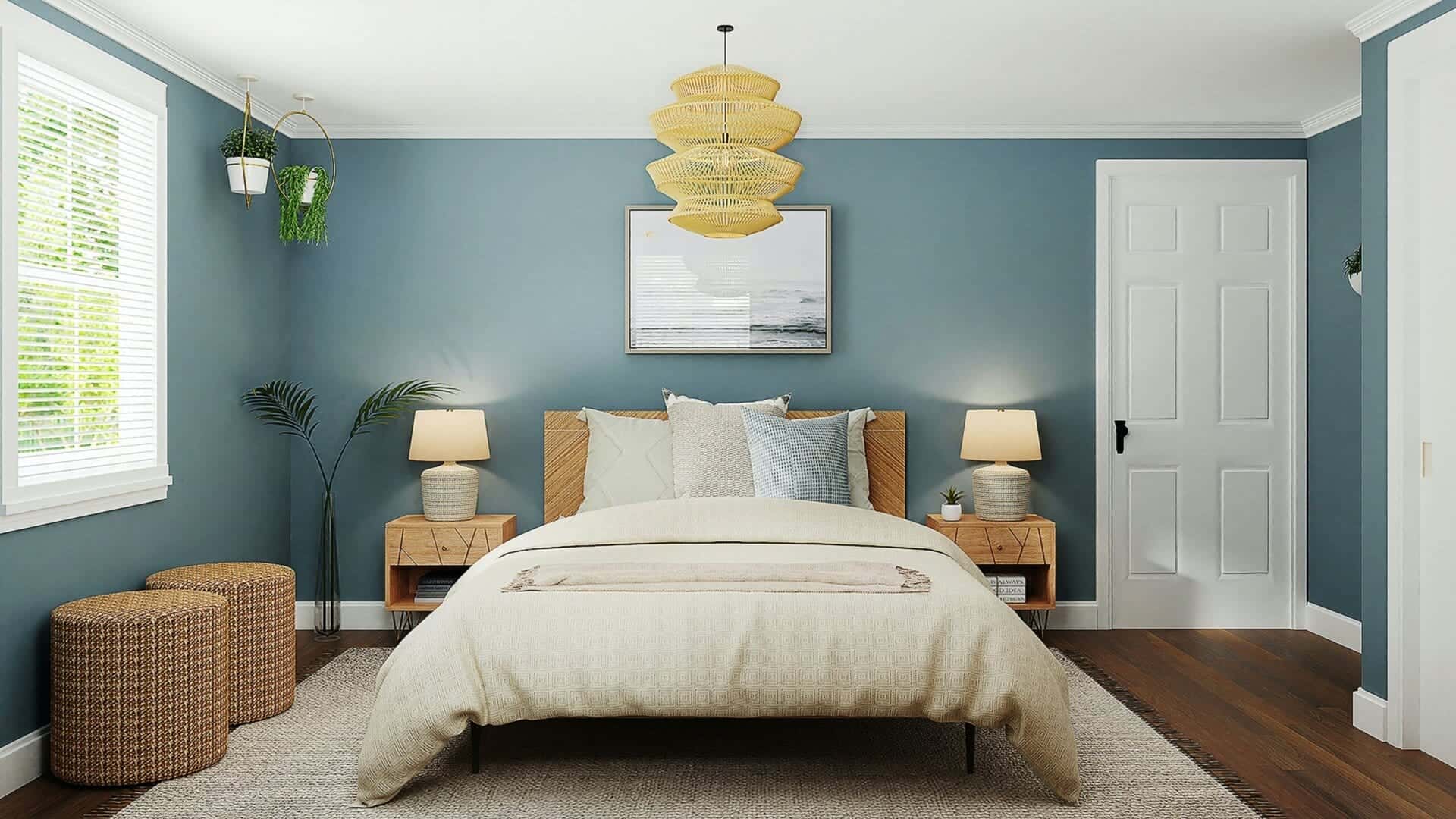
spacejoy vOa PSimwg4 unsplash scaled
8. Maintenance and Durability Considerations
Maintenance plays a crucial role in ensuring the long-term durability and performance of light duty cabins. Let’s delve into the various maintenance considerations and strategies to maximize the lifespan of these structures.
Regular Inspection and Cleaning
Inspections
- Conduct regular inspections of the cabin’s exterior and interior to identify any signs of wear, damage, or deterioration.
- Check for loose or damaged components, such as roofing panels, windows, doors, and flooring, and address them promptly to prevent further damage.
Cleaning
- Regularly clean the cabin’s exterior surfaces, including walls, roofs, and windows, to remove dirt, debris, and pollutants that can cause discoloration or deterioration.
- Clean and sanitize the interior of the cabin, including floors, walls, and fixtures, to maintain a hygienic and pleasant environment for occupants.
Structural Maintenance and Repairs
Structural Integrity
- Ensure that the cabin’s structural components, such as steel frames, roofing trusses, and walls, remain structurally sound and free from corrosion, rust, or damage.
- Repair or replace any damaged or corroded components to maintain the structural integrity and stability of the cabin.
Waterproofing
- Check the cabin’s roofing and wall cladding for signs of water damage or leakage, especially around seams, joints, and openings.
- Apply waterproofing sealants or coatings as needed to prevent water infiltration and protect against moisture-related issues such as rot, mold, and mildew.
Electrical and Plumbing Maintenance
Electrical Systems
- Inspect the cabin’s electrical wiring, outlets, switches, and fixtures regularly to ensure they are in good working condition and comply with safety standards.
- Address any electrical issues promptly to prevent the risk of electrical hazards or malfunctions.
Plumbing Systems
- Check the cabin’s plumbing fixtures, pipes, and fittings for leaks, blockages, or damage that could lead to water damage or plumbing issues.
- Repair or replace any faulty plumbing components to maintain proper water flow and prevent water-related damage.
Table: Maintenance Checklist for Light Duty Cabins
| Maintenance Task | Description |
|---|---|
| Regular Inspection | Check for signs of wear, damage, or deterioration |
| Cleaning | Remove dirt, debris, and pollutants from exterior and interior surfaces |
| Structural Maintenance | Ensure structural components remain sound and free from damage |
| Waterproofing | Apply sealants or coatings to prevent water infiltration |
| Electrical Maintenance | Inspect electrical wiring, outlets, switches, and fixtures |
| Plumbing Maintenance | Check plumbing fixtures, pipes, and fittings for leaks or damage |
By implementing a proactive maintenance plan, businesses and organizations can prolong the lifespan of light duty cabins and ensure they remain functional, safe, and aesthetically pleasing throughout their service life. Regular inspections, cleaning, structural maintenance, and attention to electrical and plumbing systems are essential for preserving the durability and performance of these versatile structures.
Conclusion: Enhancing Spaces with Light Duty Cabins
In conclusion, light duty cabins offer versatile and cost-effective solutions for a wide range of applications in Malaysia. From construction sites to commercial events, residential areas, educational institutions, and healthcare facilities, these cabins play a vital role in meeting temporary space needs with efficiency and convenience. By understanding the various specifications, design considerations, and maintenance requirements, businesses and organizations can make informed decisions that align with their specific needs, preferences, and sustainability goals. With their durability, functionality, and adaptability, light duty cabins continue to enhance spaces and support diverse applications across various sectors in Malaysia.

